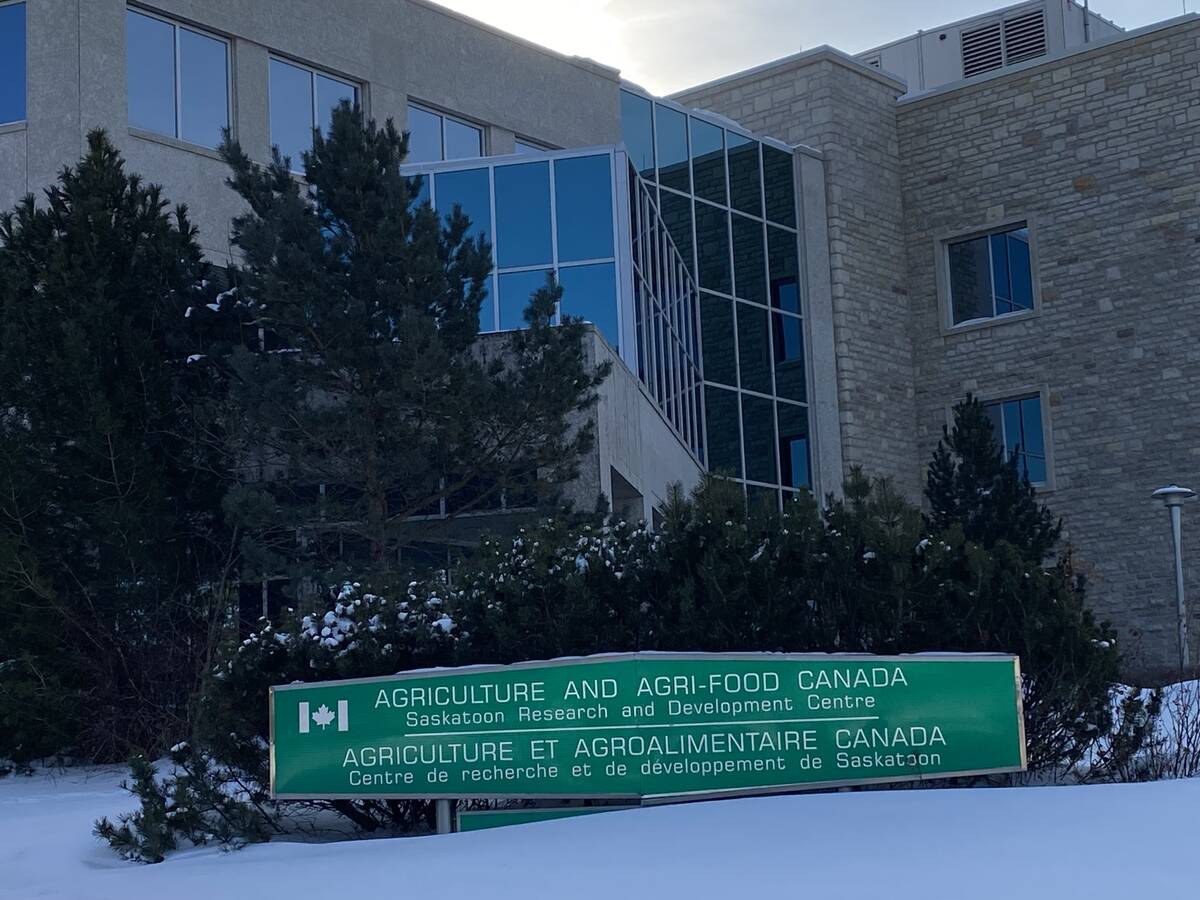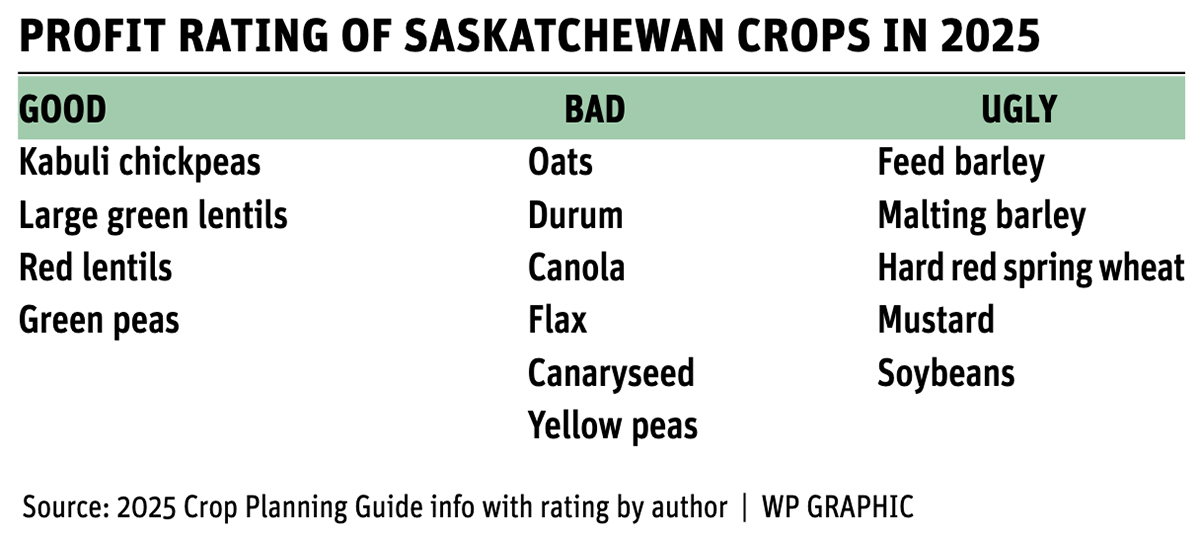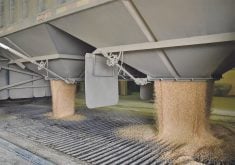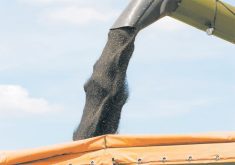Only a select few cropping options are showing a profit over and above total costs in Saskatchewan Agriculture’s 2025 Crop Planning Guide.
The guide is available online. Printed versions were to be available at the Crop Production Show this week in Saskatoon and can also be picked up at regional Saskatchewan Agriculture offices.
It uses two yield assumptions: a high yield at the 80th percentile of average yields in each soil zone and the much lower five-year average yield. Crop inputs are those assumed for a high yield crop.
Read Also

Don’t undermine the backbone of agriculture
Agriculture Canada and the dedicated public servants who work every day to support Canadian agriculture are a crucial pillar of the sector and they need support — not austerity.
You can quibble with the variable costs assumed for each crop. As well, fixed costs vary dramatically from one farm to the next. While everyone should insert their own numbers, the guide paints a rather depressing picture for returns unless grain prices end up better than expected.
Let’s divide the cropping options into three categories: the good, the bad and the ugly. We’ll start with the ugly.

These are crops that are money losers even at high yields. While returns cover operating costs in most cases, total costs are not covered. The worst money losers include feed barley, malting barley, hard red spring wheat, all types of mustard and soybeans.
In the bad category, let’s put the crops that show some profit potential at high yields in at least one soil zone. This grouping includes oats, durum, canola, flax, yellow peas and canaryseed.
Oats at the high yield assumption show a profit in the black soil zone. Durum with a high yield makes money in the dark brown but not the brown soil zone. Both flax and canola at the high yield assumption make a bit of money in the black soil zone and basically break even in the dark brown soil zone. Yellow peas show a slight profit at high yields in the black soil zone. Canaryseed shows a small profit with high yield in the dark brown soil zone.
In the good category, we’ll place any crops showing profit potential at average yields in a soil zone. That isn’t a very high standard, but it’s the best showing among those crops with significant acreage.
Kabuli chickpeas are profitable at the high yield assumption in the brown soil zone and are around breakeven when average yield is assumed. No analysis is provided for chickpeas grown in other soil zones.
Large green lentils have good profitability in all soil zones at the high yield and are also profitable in the dark brown soil, assuming an average yield. Similarly, red lentils are profitable in all soil zones at high yields and are somewhat profitable with average yields in the black soil zone.
Green peas have good profitability at high yield levels in all soil zones and are profitable at average yields in the black soil zone. They are marginally profitable at average yields in the dark brown soil zone.
Some of the very small acreage crops, such as oilseed sunflower, black beans, caraway, coriander and quinoa, are showing sizable profit potential in the 2025 Crop Planning Guide and may warrant investigation by producers willing to be adventurous.
Kevin Hursh is an agricultural journalist, consultant and farmer. He can be reached by e-mail at kevin@hursh.ca.
















